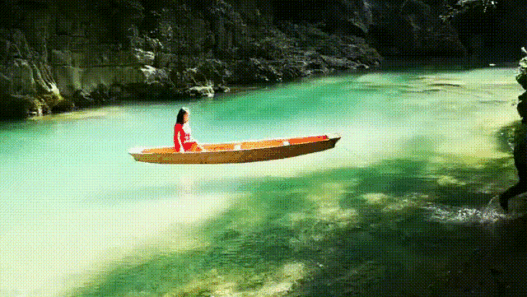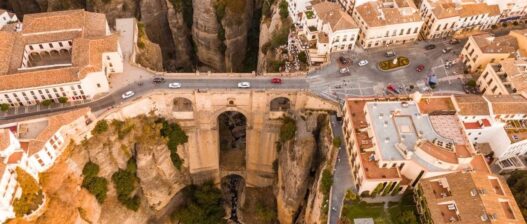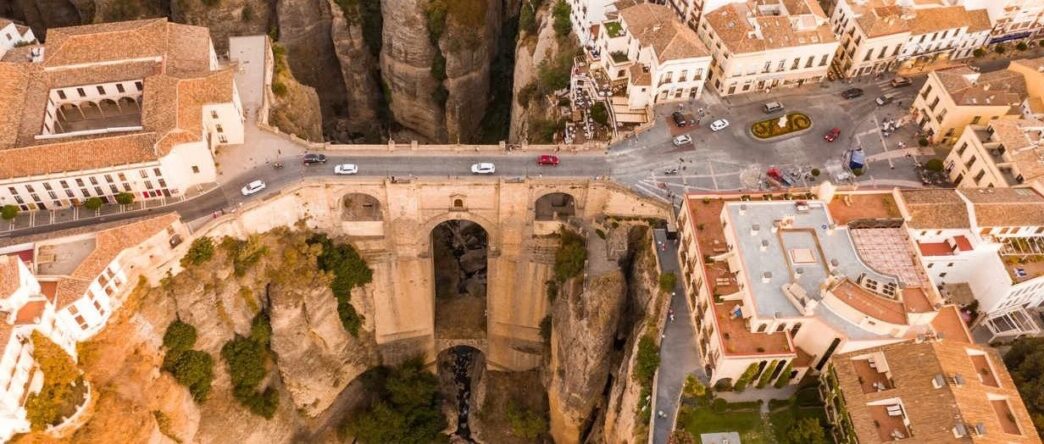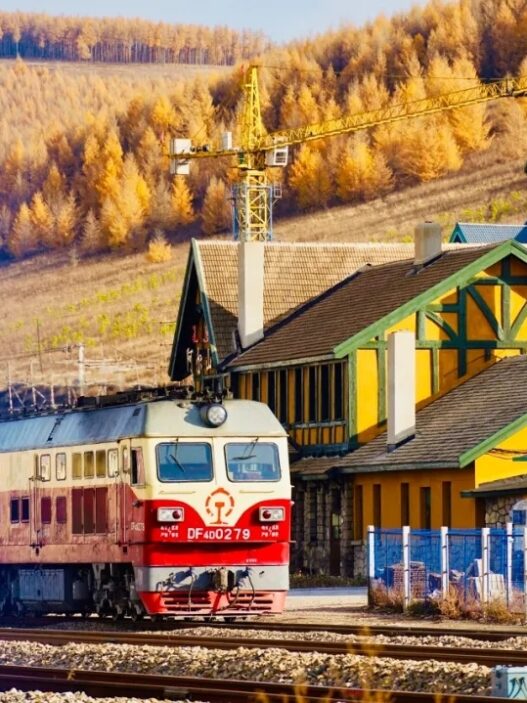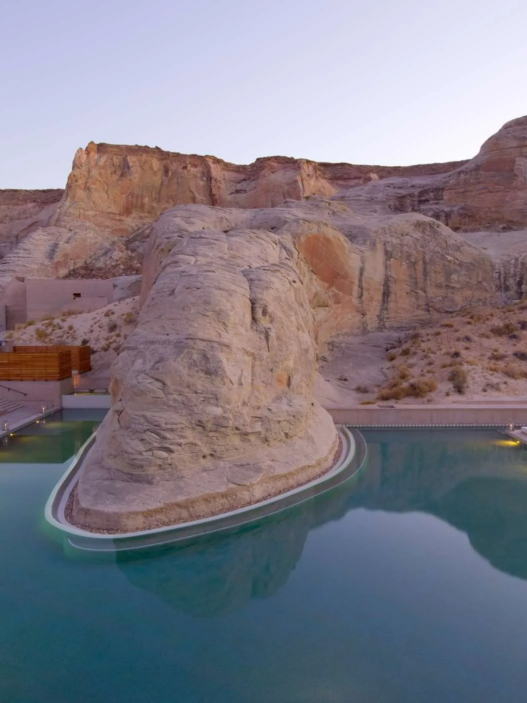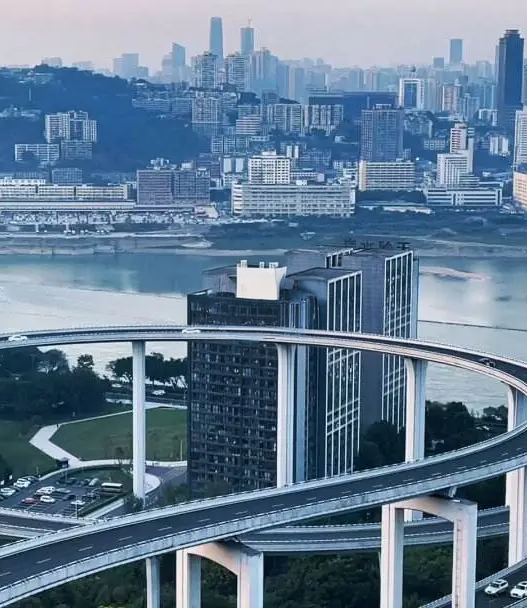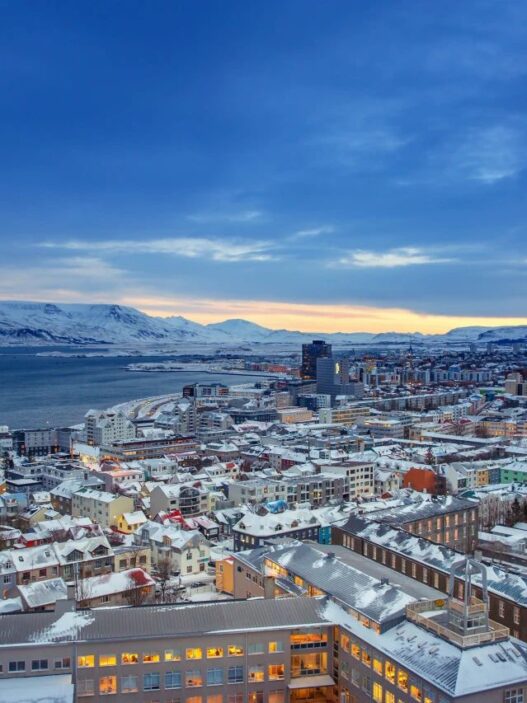Hemingway once wrote in “Death in the Afternoon” that if you want to honeymoon in Spain or elope with someone, Ronda is the most suitable place. The entire town is filled with romantic vistas…
In the heart of Andalusia, Spain, there lies a small town perched on a cliff — Ronda. Located in southern Spain, it’s one of the oldest cities in Europe. The town’s iconic landscape is its dramatic gorge and the bridges spanning it, like a giant backbone dividing Ronda into two parts, with the new town on one side and the old town on the other.
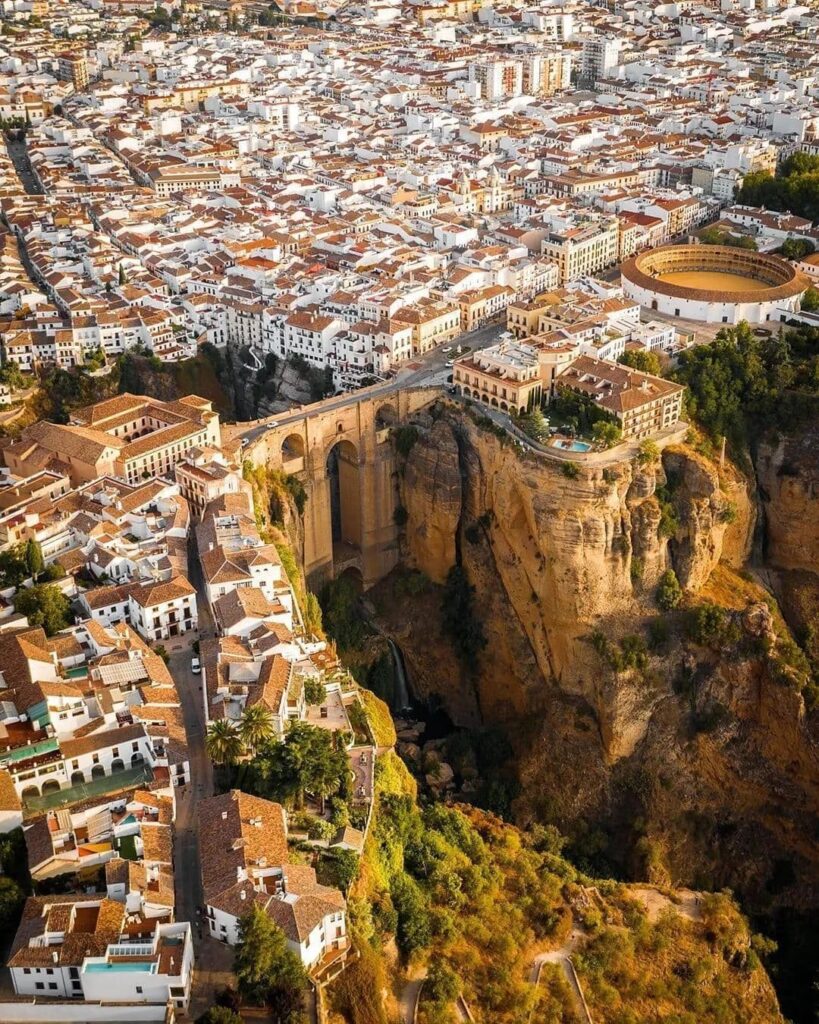
The old town still retains the architectural style of the Moors, as if the traces of history are quietly telling stories of the past. It’s not only the birthplace of bullfighting but also a perfect blend of history and nature. Today, let’s explore Ronda and feel its unique charm.
Main Attractions
Ronda is a small town, generally enough to explore in one day. If you want to deeply experience the town’s life, you can stay for two days to slowly appreciate its beauty.
Ronda’s New Bridge – Puente Nuevo
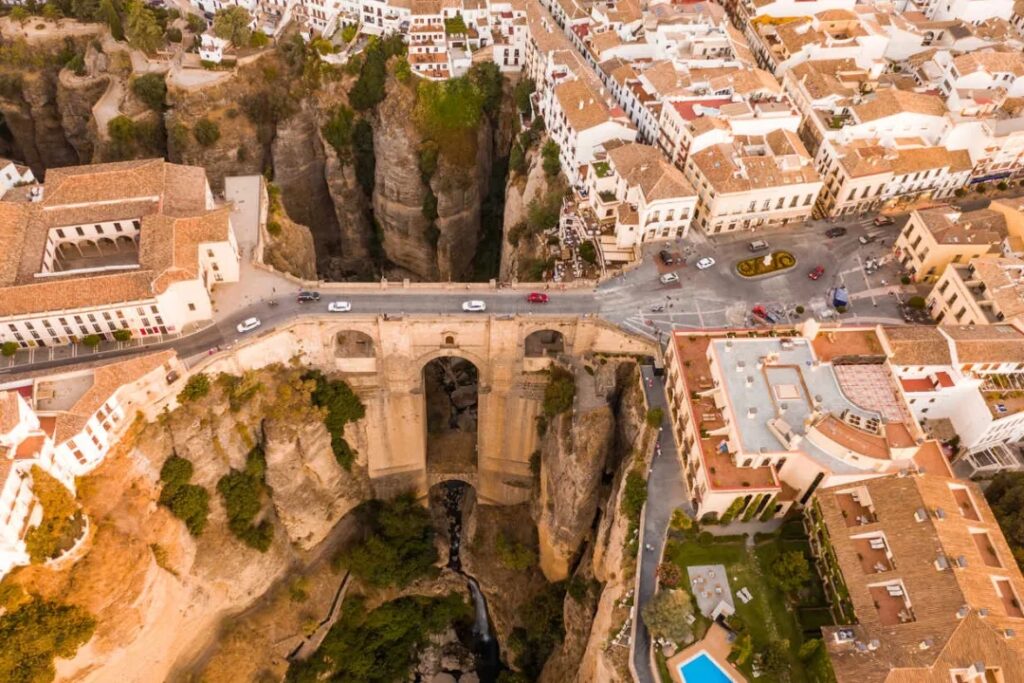
Ronda’s New Bridge (Puente Nuevo) is the town’s iconic structure and one of its most awe-inspiring sights. Spanning the El Tajo Gorge, it connects the old and new parts of Ronda.
Built in the 18th century, it took 42 years to complete. It stands at a height of 120 meters, constructed from stone, solid and majestic. There’s a small room in the center of the bridge, once used as a prison, now turned into a museum displaying information about the bridge’s history and construction.
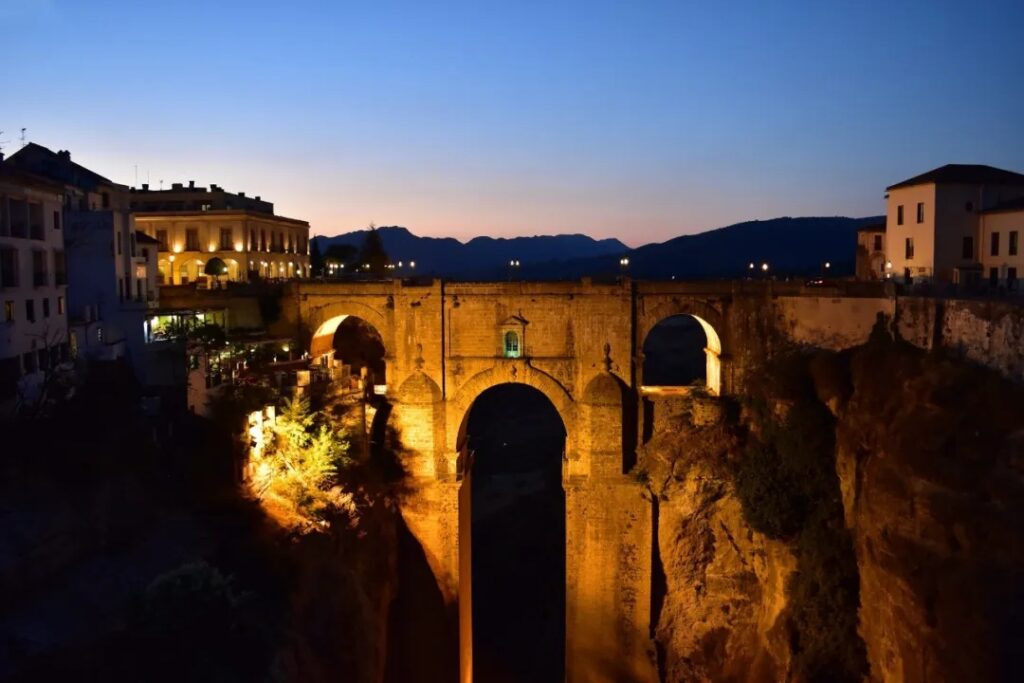
Standing on the New Bridge, you get an excellent vantage point to overlook the 100-meter-deep gorge, the winding Guadalevín River, and the distant Andalusian mountains, with spectacular views.
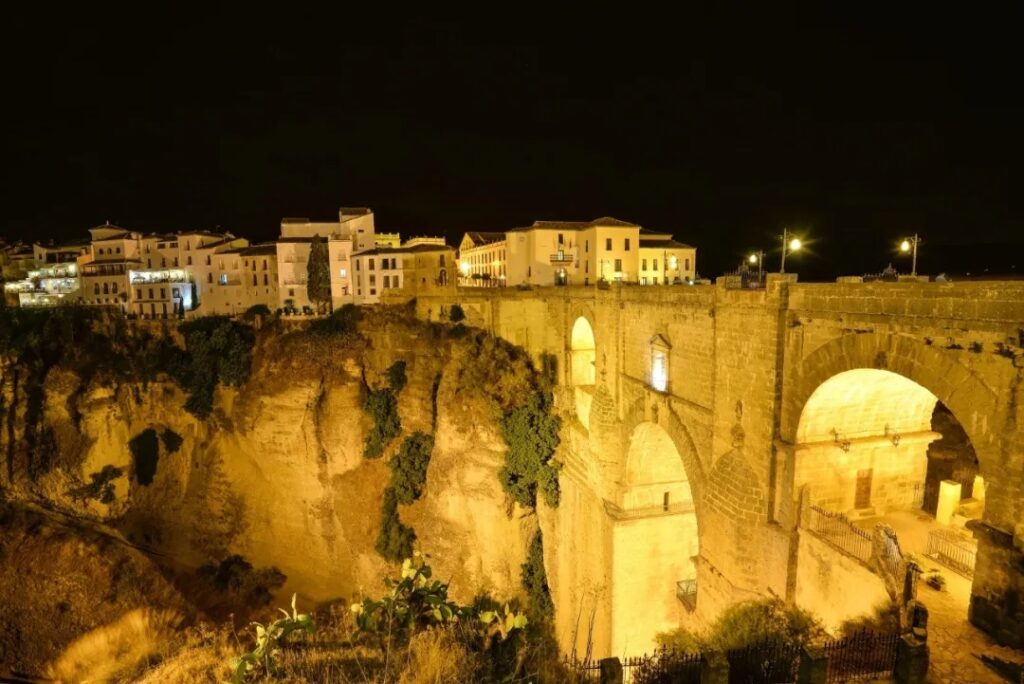
From sunrise to sunset, the New Bridge presents different feelings at different times.
El Tajo Gorge
Below the New Bridge lies the El Tajo Gorge. Following the viewing platform of the New Bridge, you can reach the gorge, where the scenery along the way is very unique. Looking up at the New Bridge from the bottom of the gorge offers a different perspective.
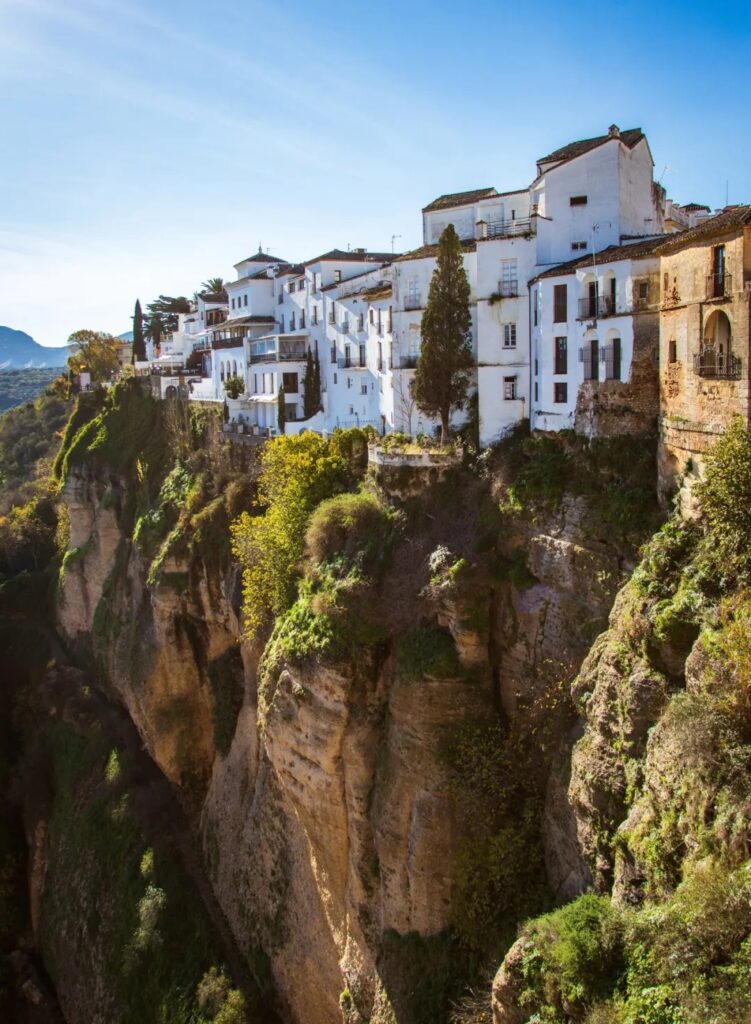
El Tajo Gorge is one of the natural wonders of Ronda, Spain. This gorge, over 100 meters deep, was formed by the Guadalevín River eroding the land for millions of years, dividing the town into two parts: the historic old town on one side and the more modern new town on the other.
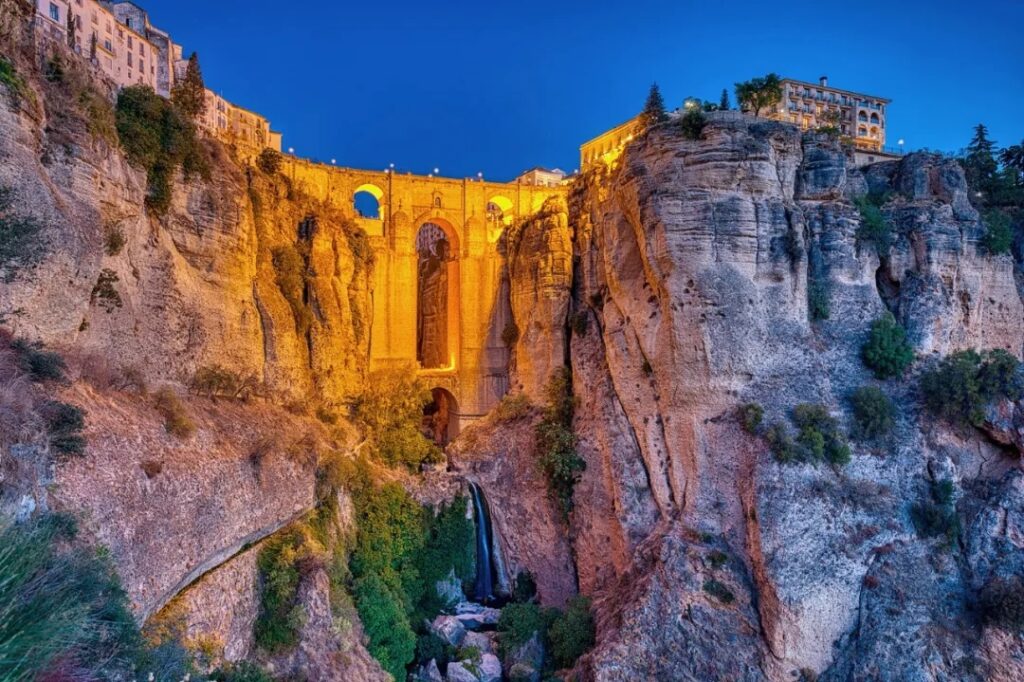
The cliffs on either side are steep, covered with green vegetation, creating a unique natural beauty. At the bottom of the gorge, the Guadalevín River flows quietly, its clear waters reflecting the blue of the sky.
Plaza de Toros de Ronda – Bullring
Ronda is known as the hometown of Pedro Romero, the father of modern bullfighting. The bullring here is one of the oldest and most beautiful in Spain, where modern bullfighting was born, and it attracts thousands of visitors each year during the bullfighting festivals.
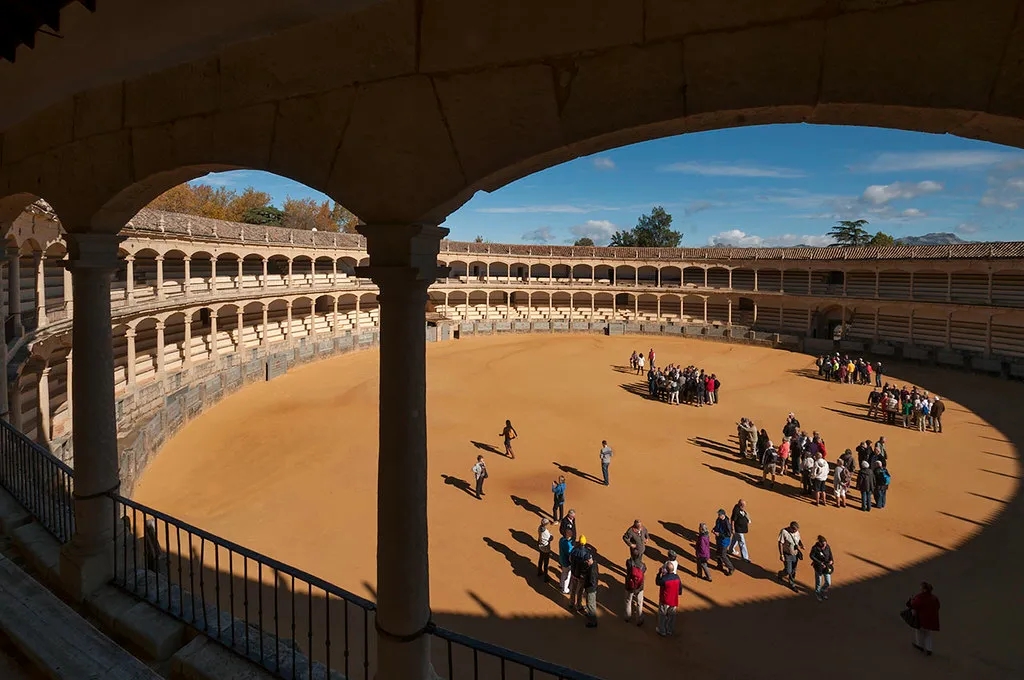
The bullring’s architectural style is typically Andalusian, with a circular arena made of sandy-colored stone, capable of seating about 5,000 spectators, which was quite substantial for the time. Its design had a profound influence on later bullring architecture. The corridors and arches inside reflect the aesthetics of the era.
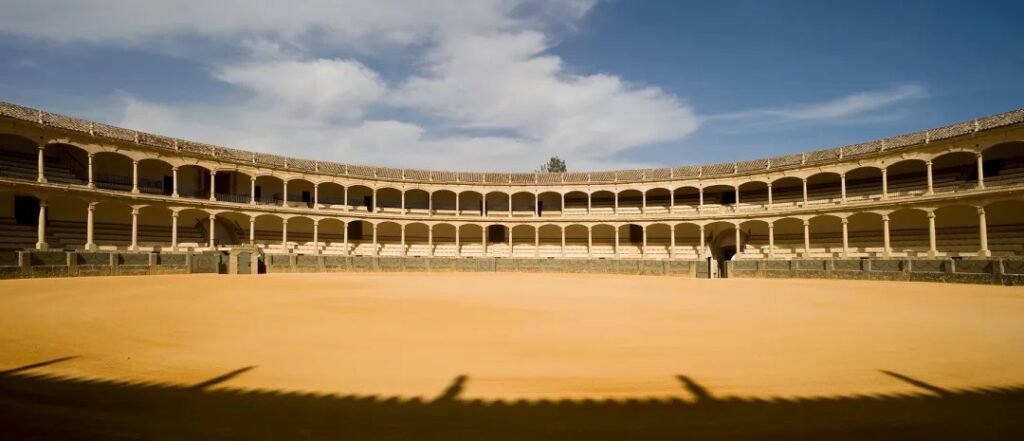
Ronda’s bullring is not only famous for its architecture and historical value but also for the annual Goyesca Bullfighting Festival, which commemorates the famous Spanish painter Francisco Goya. During the event, bullfighters wear costumes reminiscent of Goya’s era (late 18th century). This tradition began in the 1930s and continues to this day, becoming one of Ronda’s most eye-catching cultural events.
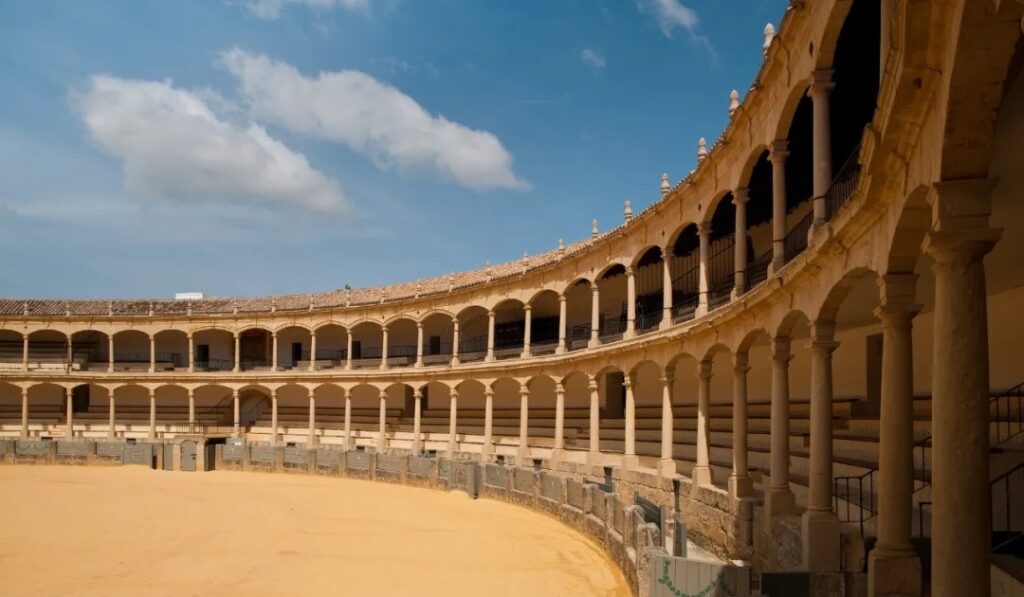
Apart from bullfighting events, the Plaza de Toros de Ronda also serves as a museum where visitors can learn about the history and culture of bullfighting. Inside, there are many bullfighting-related artworks and memorabilia, including matadors’ outfits and bullfighting posters.
Museo del Bandolero – Bandit Museum
Andalusia was once rife with bandits, and this museum is dedicated to showcasing the history of Spanish bandits from the 19th to the early 20th century. During this time, bandits were active in the countryside and on the roads, often portrayed as romantic anti-heroes in folklore and literature.
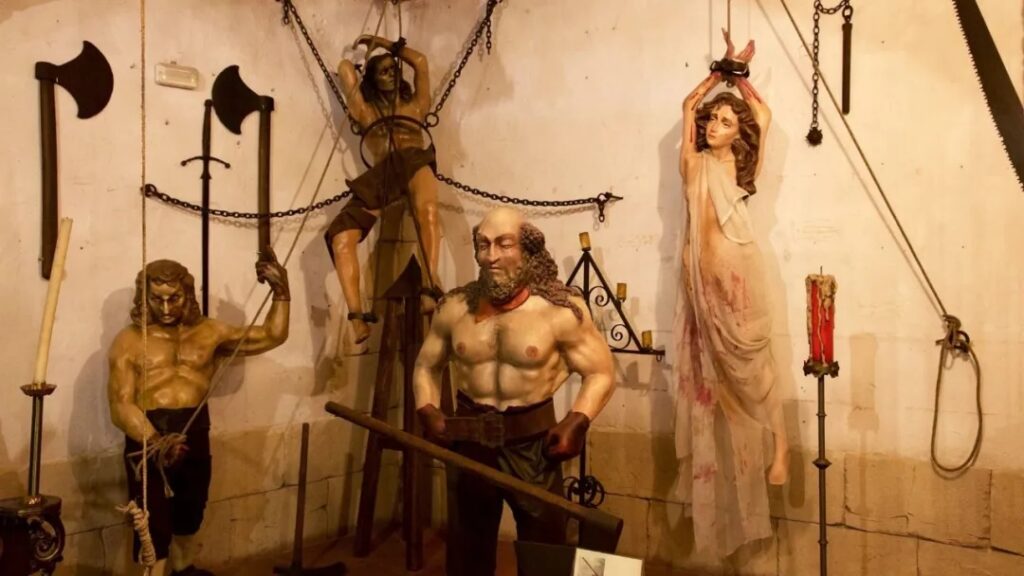
The museum houses many burglary tools, and around it, there are other quirky museums, like the Ronda Museum and the House of the Moorish King, which are quite interesting.
Puerta de Felipe V – Gate of Philip V
Built in 1742 on the orders of Philip V to strengthen the city’s defenses, this archway gate is made from local stone, with a simple and classical design typical of Baroque architecture. The gate usually bears the coat of arms of Philip V, commemorating this monarch.
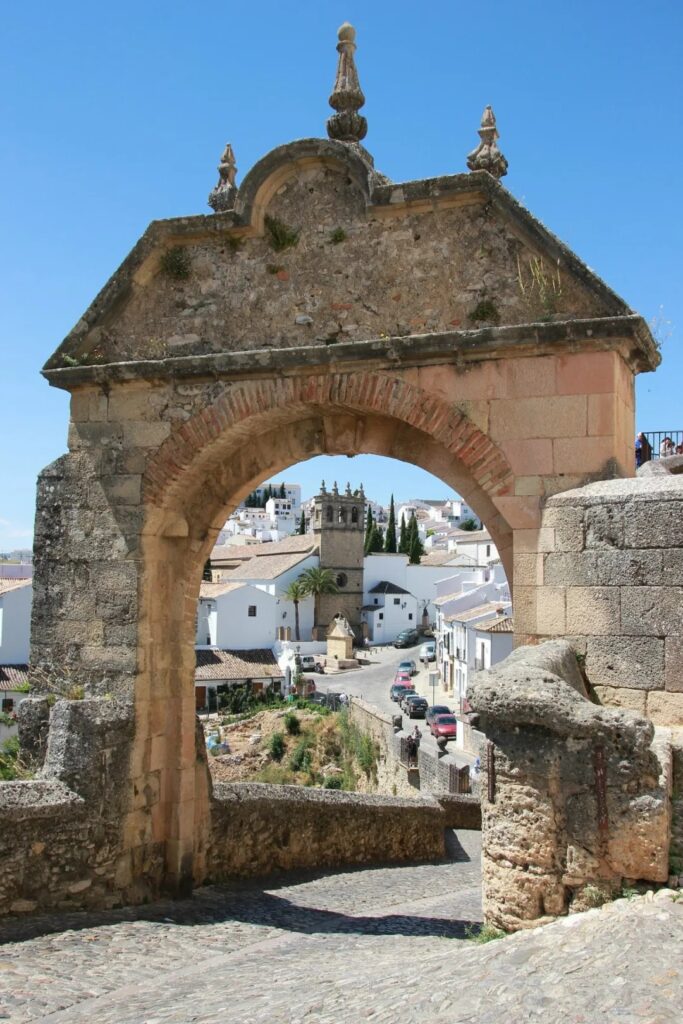
The gate was constructed to protect the city from invasion and also symbolized royal authority and the importance of the city. Today, it serves as an important passage between Ronda’s new and old towns. Passing through the Gate of Philip V, you enter the old town, where narrow streets, ancient churches, and traditional Andalusian architecture await.
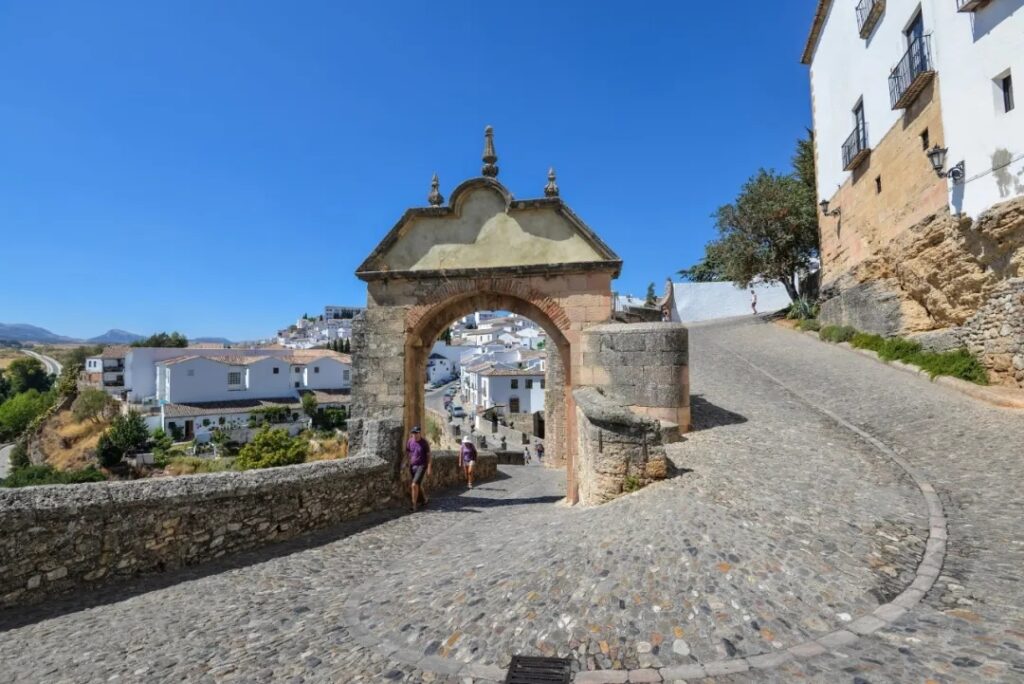
This is also one of Ronda’s iconic structures, once the mandatory route into the town, and the best spot for photographing the white town.
Ronda’s Old Bridge
After passing through the Gate of Philip V, you’ll come across the Old Bridge. While not as awe-inspiring as the New Bridge, it exudes a different kind of historical charm.
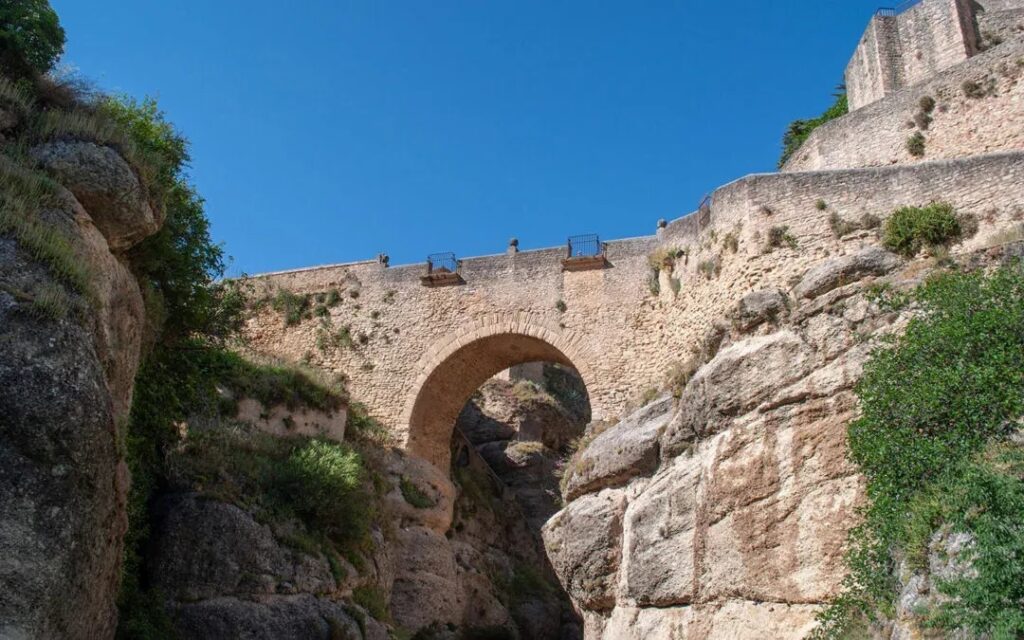
Ronda’s Old Town
The streets of the old town are narrow and winding, full of medieval ambiance. Walking through these ancient streets, you can feel the rich history and the traditional Andalusian charm that Ronda has preserved.
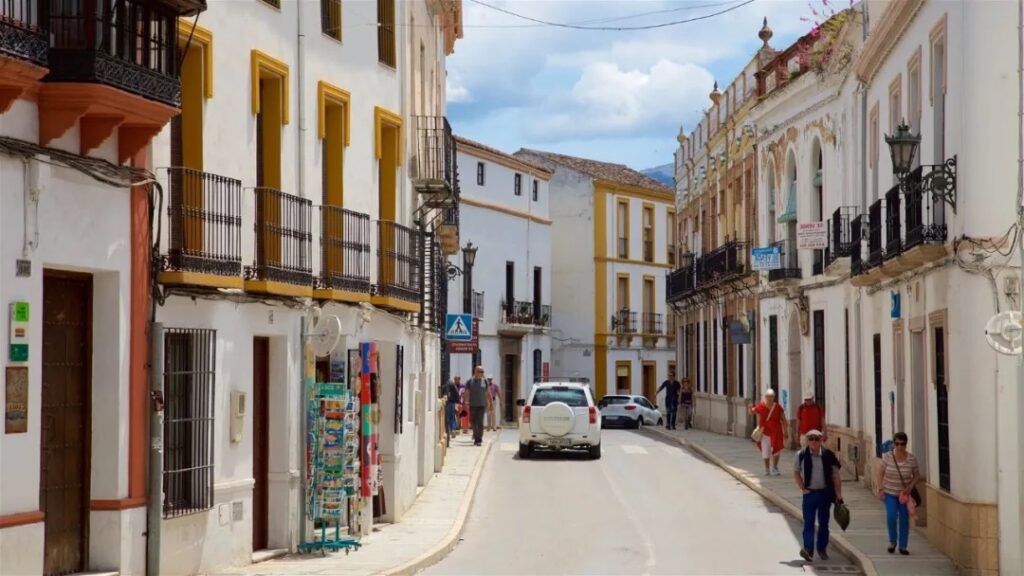
Culinary Delights
If you’re a food lover, you’ll fall in love with Ronda’s cuisine. The Tapas and wine here are not to be missed. Every bite is an enjoyment, making one exclaim in delight.
Tapas
Tapas is a Spanish culinary tradition, referring to various small portions of food, which can be served cold or hot, commonly found in bars and restaurants throughout Spain. These small dishes are typically enjoyed with drinks and come in numerous varieties, with almost no fixed limitations.
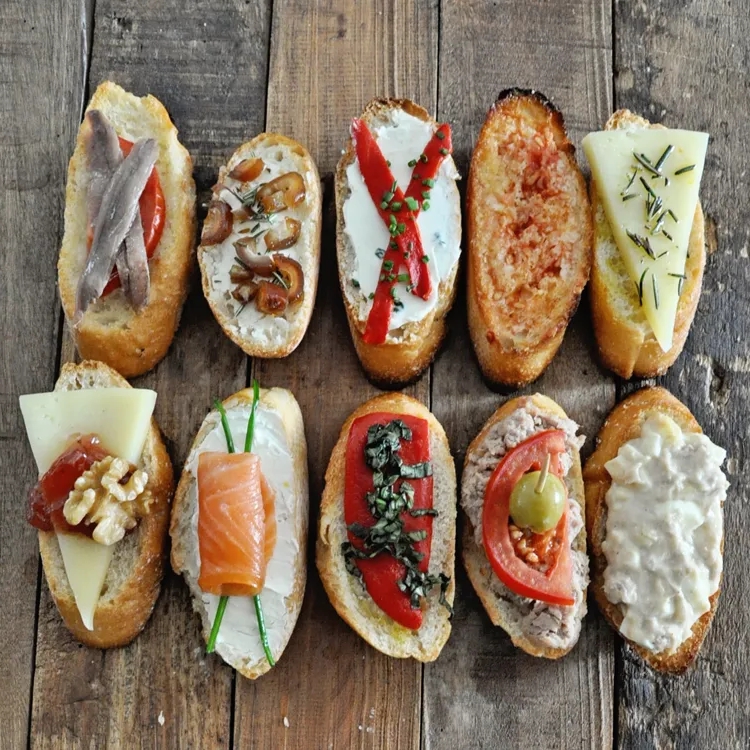
Rabo de Toro – Oxtail Stew
A traditional Andalusian dish, usually slow-cooked in red wine until the meat is tender and the aroma is rich.
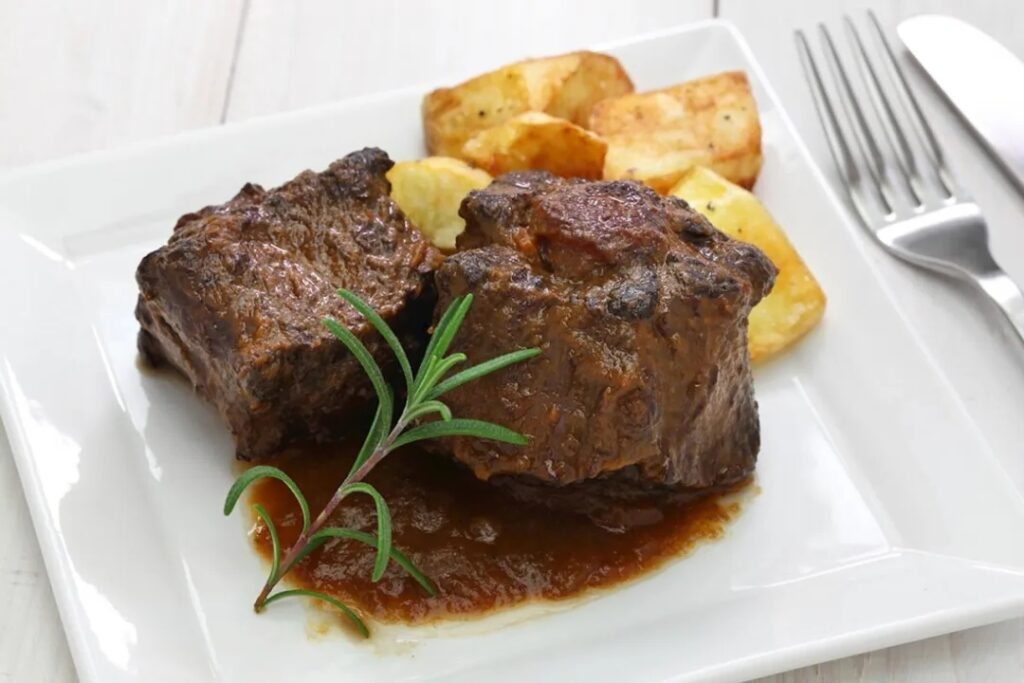
Jamón Ibérico – Iberian Ham
Iberian ham produced in the Ronda area is world-renowned for its rich flavor and delicate texture.
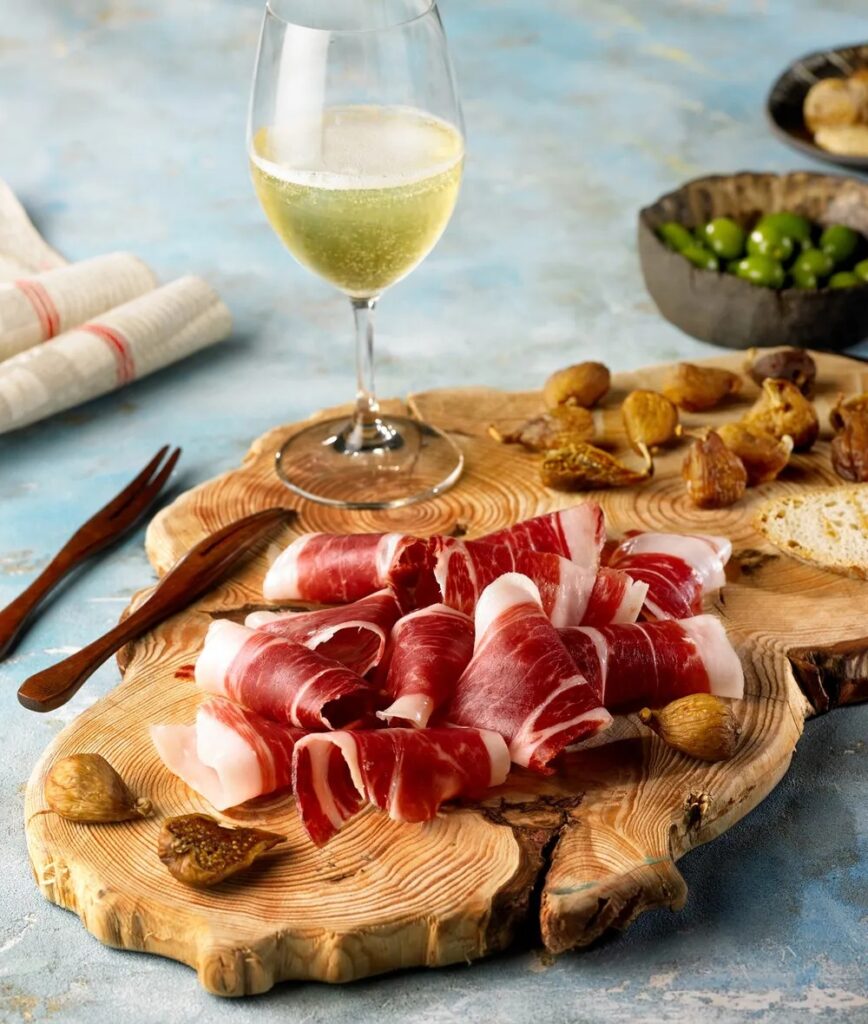
Queso de Cabra – Goat Cheese
The Andalusian region produces a wide variety of goat cheeses, ranging from soft to hard, with flavors from mild to intense.

Vinos de Ronda – Ronda Wines
Ronda is also a wine-producing area with many vineyards offering wine tasting tours, where you can try local reds, whites, and even sweet wines.
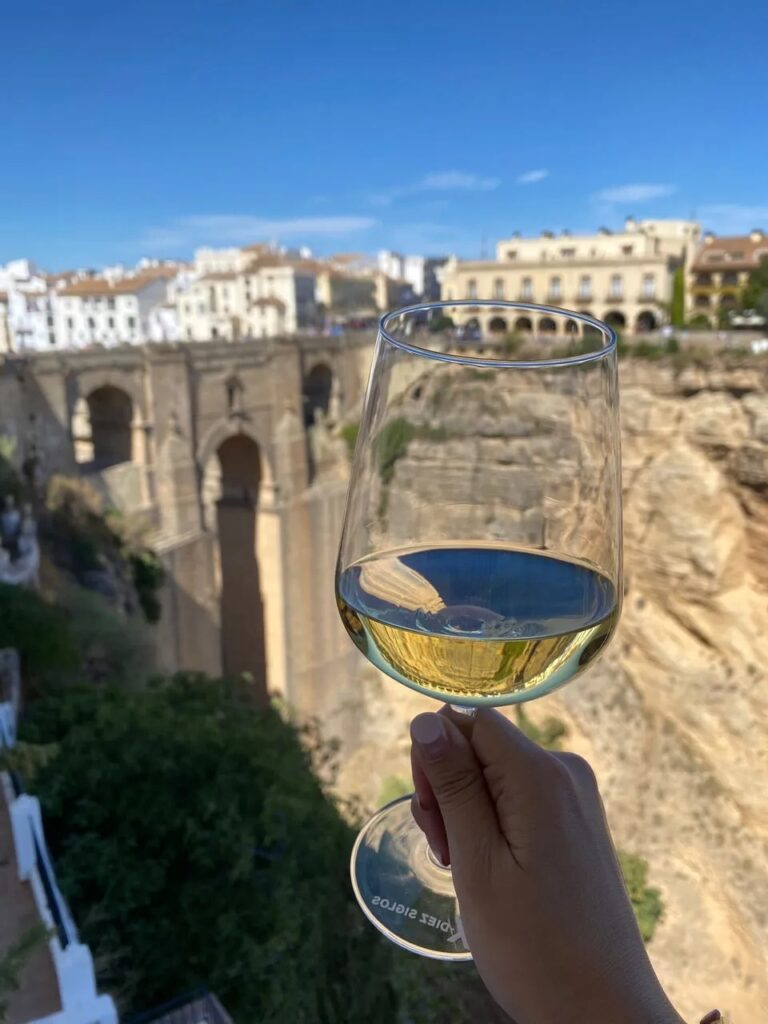
In Ronda, the most romantic experience might be choosing a restaurant with a stunning view, where, under the gentle glow of the sunset, you can overlook the majestic New Bridge of Ronda, glass of wine in hand, sharing a feast of flavors with your loved one.
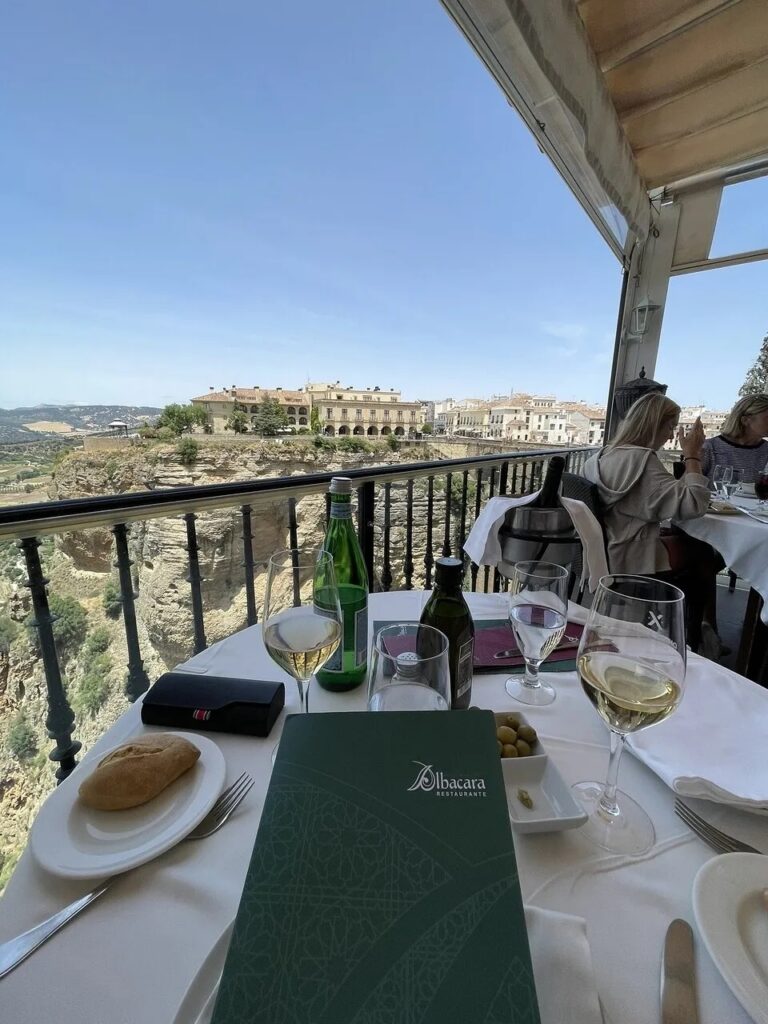
Near the New Bridge, there’s such a restaurant — Albacara Restaurant, a one-Michelin-star establishment with top-notch service and views. However, to secure such a view, you’ll need to book a dinner terrace spot in advance.

Everywhere you look, romance abounds!






